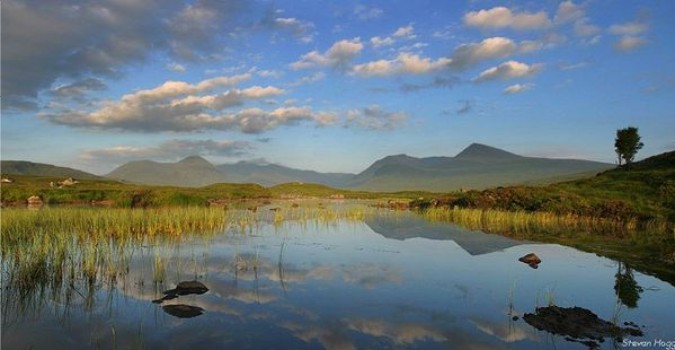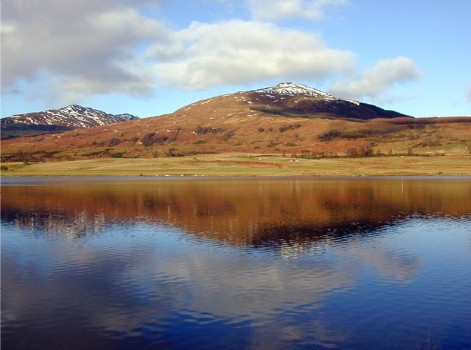

No - that's not a spelling mistake. Scottis is one of the words used to describe the language used in the Scotland Lowlands in the 15th century to distinguish it from Inglis as spoken in England. Other terms that were used for this language include Scots, Old Scots, Broad Scots, Lowland Scots, and Lallans. Our story starts around 400.
Prior to the 5th century, the British Isles were populated by people speaking the Celtic language, of which there were several variations. However, Germanic tribes invading England in the 5th and 6th centuries pushed the Celtic-speaking tribes out of what is now England into Scotland, Wales, Cornwall, and Ireland. The Jutes, Saxons, and Angles (the invading tribes) spoke a mutually intelligible language that is referred to as Old English, sometimes known as Anglo Saxon. Anglo-Saxon was the language in use in England from about 400 to about 1166.
The displacement of the Celtic language out of England had an obvious impact on Scotland. In the early middle ages, there were five main language groups in Scotland. We'll start at the Scottish/English border and then proceed north. In the south-west of Scotland, the language was a form of Celtic called British. In the south-east (e.g., Edinburgh and the Lothians), the language was a form of Old English. In the west (north of the Clyde), the language was Gaelic - another form of the Celtic language and closely related to Irish Gaelic. The dominant ethnic group in this area were the Scots who came from Scotia, the north eastern part of Hibernia (Ireland). In the east (North of the Forth and including Perthshire), the original language was Pictish, another form of Celtic. Finally, the coastal fringes and islands were heavily settled by Vikings and in some areas Norse was the main language.
Apart from the intrusion of the Vikings, the main development in this period was the spread of Gaelic at the expense of Pictish (in the east) and British (in the south-west) which became largely extinct by the end of the 11th century. By 1200, Gaelic was spoken throughout most of Scotland with the exception of some parts of the north where Norse was dominant, and Lothian where the Northumbrian form of Old English still prevailed.
Back we go to England: After the Norman Invasion in 1066, the Old English (Anglo-Saxon) language was gradually transformed. The Normans spoke a dialect of Old French. As the Norman nobles of England became distinct from their French counterparts, they adopted a modified English known as Anglo-Norman as their native tongue. Meanwhile, the lower classes were speaking Old English. After the Black Death killed about one-third of the English population in 1350s, the language of the labouring and merchant classes grew in economic importance compared to Anglo-Norman. The end result was a mixture of the two languages which is referred to as Middle English. This lasted through to about 1500.
Meanwhile, back in Scotland: Following the Norman Conquest of England, the Scottish monarchy intermarried with the Anglo-Saxon monarchy who had fled England. Later, Impressed by the governmental and cultural innovations introduced in England by the Normans, King David I (1124-53) encouraged more Anglo-Normans to settle in Scotland in return for becoming part of the Scottish aristocracy. David also made significant changes in trade and commerce. David established chartered burghs throughout the regions. All forms of commerce were banned outside these burghs. Royal Burghs were given the exclusive right to trade with foreign merchants. This preferential treatment brought traders and valuable craftsmen from Flanders, Northern France, and England to the burghs and, over time, they settled there. Their common language was Middle English and, through the influence of these burghs in the lives of the villagers around them, the use of Inglis spread rapidly. By the end of the 13th century, there were at least 50 burghs, each provided tolls and rents that were used to build Scotland's cathedrals, abbeys, and castles. At the same time, the political center of Scotland had shifted from Gaelic Perth to Edinburgh which had been part of English-speaking Northumbria. Over time, Inglis spread throughout the Lowlands and became known as Scottis. By the 1500s, the use of Gaelic was considered uncouth and old-fashioned, and Scottis was recognized as the national language of Scotland.
Sources
Various web sites, including
A very brief history of the English language: (http://www.wordorigins.org/histeng.htm)
History of Scotland: Wikipedia Encyclopaedia. (http://en.wikipedia.org/wiki/History_of_Scotland#Anglo-Norman_influence)
Scotland: A Concise History: (http://www.electricscotland.com/history/scotland/index.htm)
Towns and Trading in Scotland. (http://netmedia.co.uk/history/week-18/)